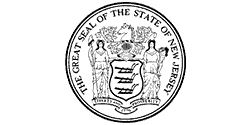

STATE OF NEW JERSEY
Division of The Ratepayer Advocate
31 Clinton Street, 11th Fl
P. O. Box 46005
Newark, New Jersey 07101
| JAMES E. McGREEVEY |
SEEMA
M. SINGH, Esq.
|
| Give
Cable TV Subscribers Freedom of Choice
By Seema
M. Singh Freedom of choice is the American way. One does not have to look any further than the cable television industry to see the consequences of a lack of consumer choice. Cable TV prices have been increasing at an alarming rate since the federal deregulation of the cable industry in 1996. Under the existing pricing structure, cable TV subscribers pay a fixed price for a fixed package – or tier – of channels. If subscribers want to watch their favorite programs, they have to pay for channels they don’t want and may never watch. When it comes to subscribing to cable TV, it’s an all or nothing proposition. Consumers simply don’t have a choice. It’s time to offer consumers another option other than cable TV’s fixed price menu. A growing number of consumer advocates and regulatory authorities nationwide are opposing the cable TV industry’s mandatory pricing mechanism. For the past two years, I have taken a national leadership role as the New Jersey Ratepayer Advocate in calling on the Federal Communications Commission to give consumers the freedom of choice to pick the cable television channels they want and to not have to pay for the channels they don’t watch. I have called on the FCC to implement what is known as “a la carte” pricing rules to counter skyrocketing cable TV prices. A la carte service and pricing gives consumers more choice, better quality and lower rates for cable television. Why should consumers be forced to pay for something they don’t want? Cable operators, cable programmers and cable industry organizations voice strong opposition to a la carte offerings because – they claim -- it will increase consumers’ monthly bills by adding costs to the production, provision and price of cable services. They also claim that a la carte offerings will undermine the quality, diversity and economic viability of the cable programming available to customers. This claim is contradicted by the recent trend of skyrocketing cable prices. Unfortunately, satellite television has failed to provide the competition that could effectively control these runaway cable prices. Although cable industry leaders often blame rising cable prices on rising programming costs, cable operators are hesitant to provide local franchising authorities with verifiable programming costs and revenue data to verify the impact of programming costs on cable rates. In New Jersey, cable operators submit only their basic tier programming costs to the state Board of Public Utilities, the local franchising authority, as part of the rate regulation process. They do not routinely submit any programming costs to the FCC. As a result, cable operators do not disclose to any regulatory body what they are actually paying for most of their programming. Cable operators should be required to provide specific information about all channel programming costs, revenues and discounts. Until this vital information is provided, no definitive proof will exist to support the claim that rising programming costs alone have led to higher cable rates. I have called on the FCC to implement consumer choice as the solution to rising cable TV prices. Choice is always the best course to provide consumers with competitive prices, improved service quality and innovative technology. It is my position that a la carte pricing, if applied appropriately, is the first step in controlling escalating cable prices. Consumers who want to continue with the existing tiered pricing mechanism can choose to do so. They can buy the packages compiled by the cable TV operators at set prices. However, consumers should also be given the option of choosing individual channels from different tiers (other than the basic service tier, which should not be offered on a la carte basis), thereby creating their own personal tier of services. The Ratepayer Advocate strongly believes that consumers need to know the price of each individual component of the bundled package offered by cable TV operators. Consumers also need an itemized cable TV bill so that they can assess what discounts they are receiving for purchasing the bundled service versus the price of the package they assemble on an a la carte basis. The time has come to give consumers more choice in picking the cable channels they want instead of being forced into buying a tier of channels, some of which they never watch. There is no denying that cable prices have risen over the past several years and will continue to rise unless some action is taken to rein in cable bills. Seema M. Singh, Esq., is Ratepayer Advocate and Director of the New Jersey Division of the Ratepayer Advocate. * * * The Division of the Ratepayer Advocate is an independent state agency that represents the interests of utility consumers and serves as an active participant in every case where New Jersey utilities seek changes in their rates or services. The Ratepayer Advocate also gives consumers a voice in setting long-range energy, water, and telecommunications policy that will affect the delivery of utility services well into the future. Additional information
on this and other matters can be found at the Division of Ratepayer Advocate’s
website at http://www.rpa.state.nj.us |
|
ratepayer advocate: home
| electric
| gas
| telco
| water/wastewater
| news
& info. | press
releases | case
matters | publications
| consumer
info. | links |
|